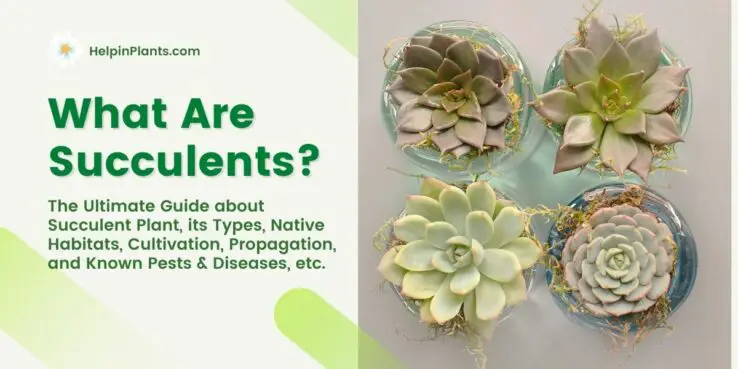
Succulent Plant
Succulents are a group of plants with some of the most interesting leaves in the plant world. They grow in a way that requires less water and provides more surface area for photosynthesis to take place. This makes them great for people without a lot of spare time or space to take care of plants.
They're perfect for someone who wants to add green to their living space but doesn't have the time, energy, or room needed to take care of a larger plant. In this article, we'll touch on some fun facts about succulents, their types, where they live in nature, and how to take care of them.
What are succulents?
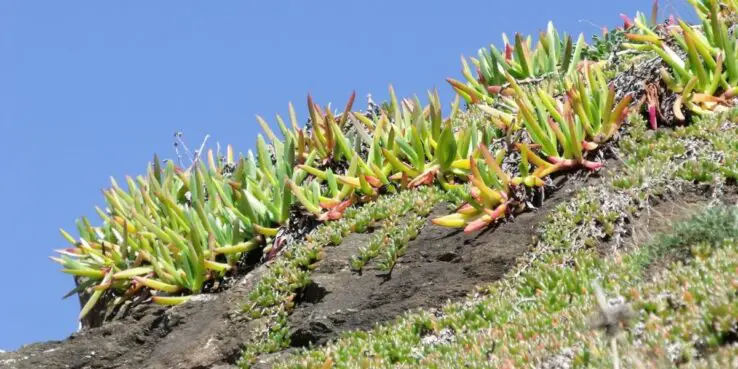
The term "succulent" refers to any species of plant that can survive in dry climates. The word succulent comes from the Latin word sucus meaning juice or sap. This is because succulents are extremely strong and can retain water for long periods of time.
Most of them are (native to, and) usually found in places like South Africa, Australia, Mexico, South America, and many Pacific Islands.
The reason why these plants are able to grow in places where there's little water is because of succulent plants' unique ability to store moisture within their leaves and stems. The leaves are filled with many microscopic spaces that collect water like a sponge. When the soil around them dries up, the plant will hold onto the water it's stored and can go long periods of time without water from the soil.
Definition of succulents
Succulent plants are drought-tolerant plants with fleshy leaves, stems, or roots that have developed additional water-storing tissue. While some other sources exclude roots from the definition.
So, if roots are excluded, many Geophytes (plants living in harsh seasons as resting buds on underground organs like bulbs & corms), would also be classified as succulents.
Plants living in dry climates, e.g. succulents, are termed Xerophytes.
[ Source Wikipedia ]
Difference between Succulents and Cacti
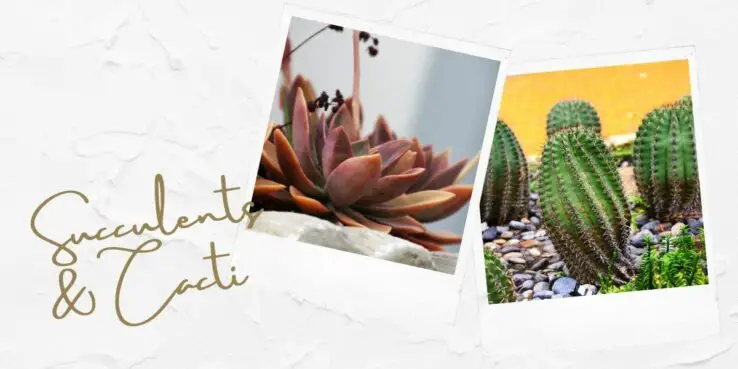
Technically, cacti are a specific type of succulent family, but they're not the same as all other kinds of succulents. There are significant differences between them that set cacti apart from other succulents.
Cacti are distinct in that they have spines on their leaves, and most cacti are native to desert climates. While most other types of succulents have a smoother surface that doesn't have sharp points.
It is worth noting, almost all Cacti are considered succulents, but not all succulents are cacti.
General Appearance of Succulents
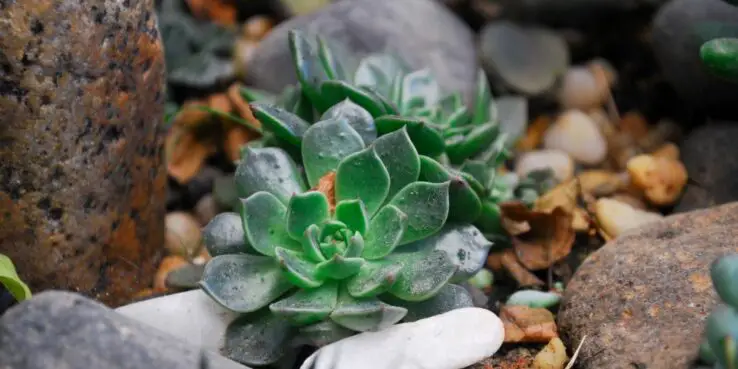
A succulent plant exterior is designed to help them survive in harsh climates with little water. They often have thick and fleshy leaves so that they can store as much water as possible to get through the dry season. This leaves succulents with a thick and wrinkled appearance.
Since succulents grow in such harsh climates, they also have developed special features to protect themselves from being eaten by animals or burned by the sun. Many of them produce a waxy coating on their leaves which prevents water loss and protects it from the elements.
This often makes succulent plants look shiny with smooth, tear-shaped leaves or flattened leaf tips that make them easier to grasp.
Where do succulents live in nature (Native Habitat)?
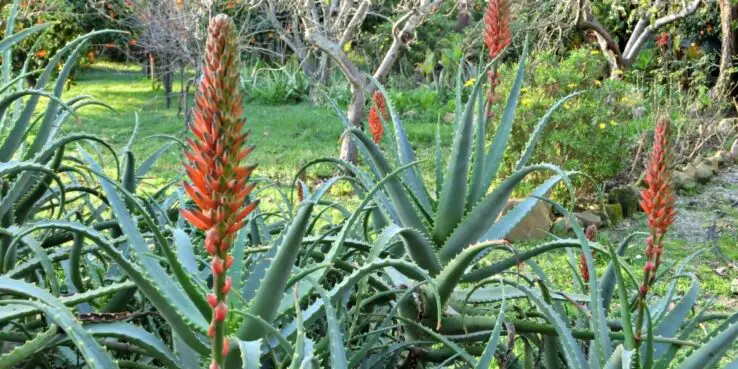
Being such hardy and adaptable plants, succulents can be found just about anywhere in nature. One of the most common habitats they're found is in sites with high temperatures and low rainfall, like deserts.
This makes sense because most places with extremely dry climates in the world will have a large number of succulents living there and using their special traits to survive.
They also grow well in grasslands and mountain regions where there's very little rainfall throughout the year. Basically, any region where there's not a lot of water is likely to be filled with succulents.
Succulents live in a variety of other habitats, they thrive in regions that are exposed to high levels of dissolved minerals (e.g. sea coasts and dry lakes) that are harmful to other plants.
Succulents come in all shapes and sizes
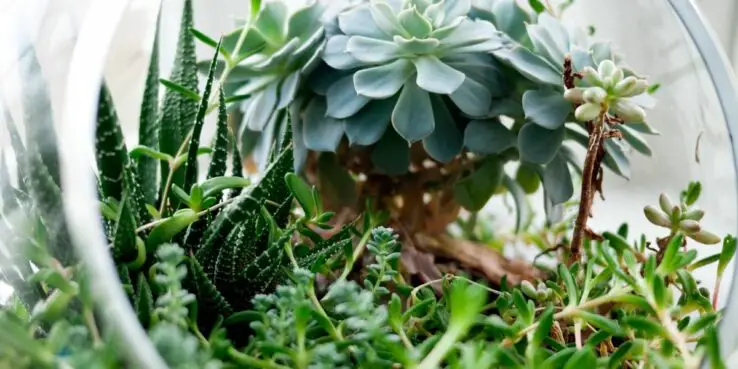
There are thousands upon thousands of different types of succulent plants with different colors and blooms out there. It may seem like they're all basically the same plant, but many of them have unique features that make each plant look and behave differently from the rest.
Many succulents are small enough to fit in a pot on your windowsill, while others grow as tall as trees. In fact, the largest types of succulents can even be classified as trees, since they can grow to be about a hundred feet tall (e.g. Adansonia digitata).
Families and Genera of Succulents
Succulent plants have been broken up into plant orders, families, and genera by scientists to better organize them.
There are some types of succulents that don't fit into these categories, so they've been put in their own family. These unique succulents make up the family Pedaliaceae.
Succulents may be found in a variety of plant families. Currently, there are about 60 plant families that contain succulents. Some of those succulent families include:
- Cactaceae (cactus)
- Aizoaceae (mesembs)
- Crassulaceae (stonecrops, jade plants and succulent perennial flowers)
- Pedaliaceae (sundews and bladderworts)
- Hymenophyllaceae (filmy ferns: 1 genus, Hymenophyllum)
- Glossulariaceae (glossularia)
- Acanthaceae (acanthus, a spiky family of plants: 1 genus, Acanthus )
- Portulacariaceae (purslane family: 2 genera , Portulaca and Claytonia )
Some species have been moved to other families, so if this article lists the family as, for example, Crassulaceae and you search for it online, you may find some resources saying it's in the Stonecrop family (Crassulaceae is now a subfamily of the Saxifragaceae).
The list of succulent genera is as below.
- Aloe
- Agave
- Echeveria
- Aeonium
- Crassula
- Euphorbia
- Haworthia
- Sedum
- Gasteria
- Graptopetalum
- Kalanchoe
- Mammillaria
- Opuntia
- Other
- Sedum
- Senecio
- Sempervivum
Growing succulents (Cultivation)
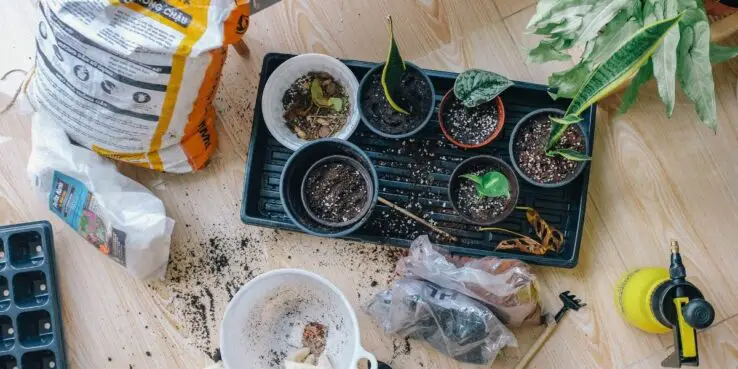
Due to their attractive shape, colors, and blooms, succulents are favored as houseplants and, when planted together in a pot, make a striking display. Succulents need less but regular watering and should be kept in at least partial sunlight. They are not generally frost-hardy and need to be kept in temperatures above freezing.
Aesthetically they can provide a modern or zen feeling to an indoor room. They come in many colors, textures, shapes, and sizes making them great house plants for almost every type of people.
Pro Tips: To propagate succulent species, you need to provide its native habitats-like conditions to keep it thriving. You also need to give it nutrients (during spring and summer, i.e. growing season), regular watering, and plant in enough sunlight site to make it thriving.
Learn more about how to grow succulents and cactus while living in any country.
Propagating succulents (Reproduction)
Succulents can be propagated by different methods. These include stem cutting, leaf-cutting, division, and seeds.
The most popular technique is propagating by stem or leaf cuttings. In stem cutting, several inches of stem with leaves are removed and after healing, callus is produced. Then after about 2 weeks, roots may appear.
To propagate by leaf-cutting, simply a healthy bottom leaf is removed from the parent plant. Then, it is placed in a place for some time to dry and heal its wound, before placing on potting soil. After some weeks, it grows small leaves then into a new plant. Many people use this method to produce new plants.
In the Division method, a stem with its roots is pulled up from a tangled clump and then transplanted into its new home. [highest success growth rate].
Please note: Succulent and cactus propagation may differ depending on succulent plant type. Propagation should be done in their growing season (usually spring and summer) and indoors.
Types of Succulent Plants
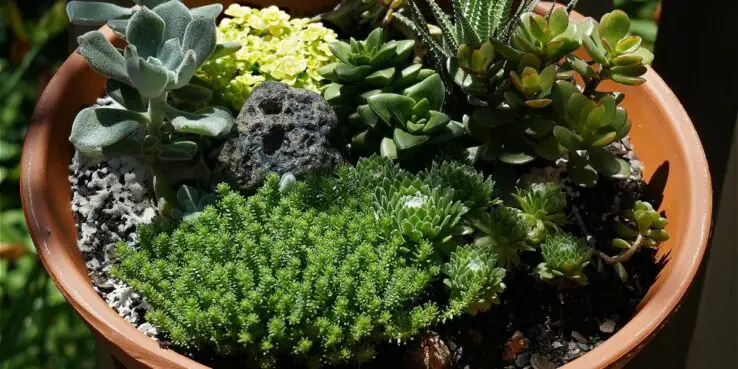
Succulent plants are low-maintenance plants. they don't need much water, light, or soil in order to thrive and grow. The variety of colors and sizes make it easy to find the perfect plant for any space you might want to decorate!
One can find succulent types for growing indoors or in outdoor gardens.
Indoor succulents
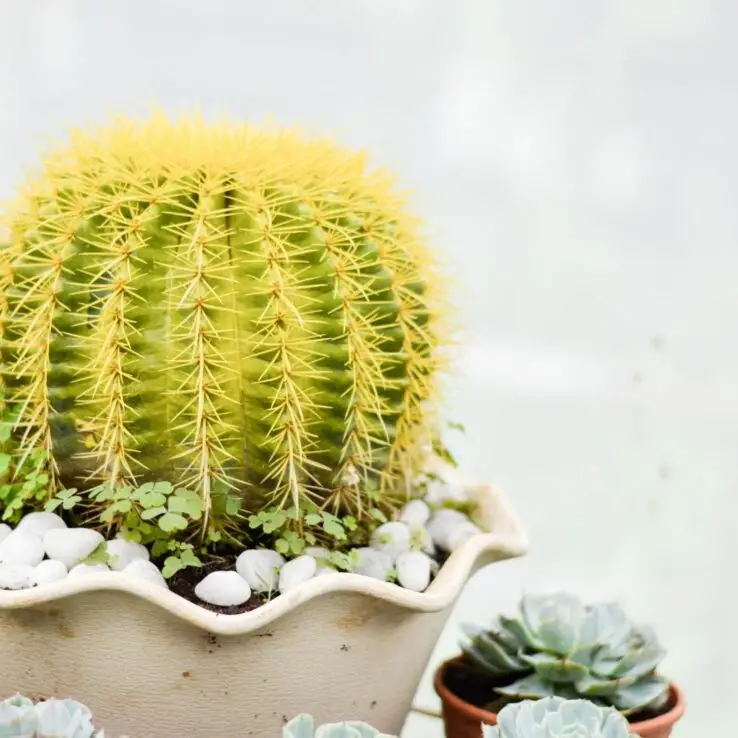
These types of succulents can tolerate low light conditions. With a lack of sunlight, most succulents still do well in homes with windows that receive only a couple of hours of natural light daily.
These succulents usually grow to be about 6-12 inches tall and wide, depending on their species type. Also, they can live in containers on tabletops or next to smaller houseplants like cacti and other succulents.
Outdoor succulents
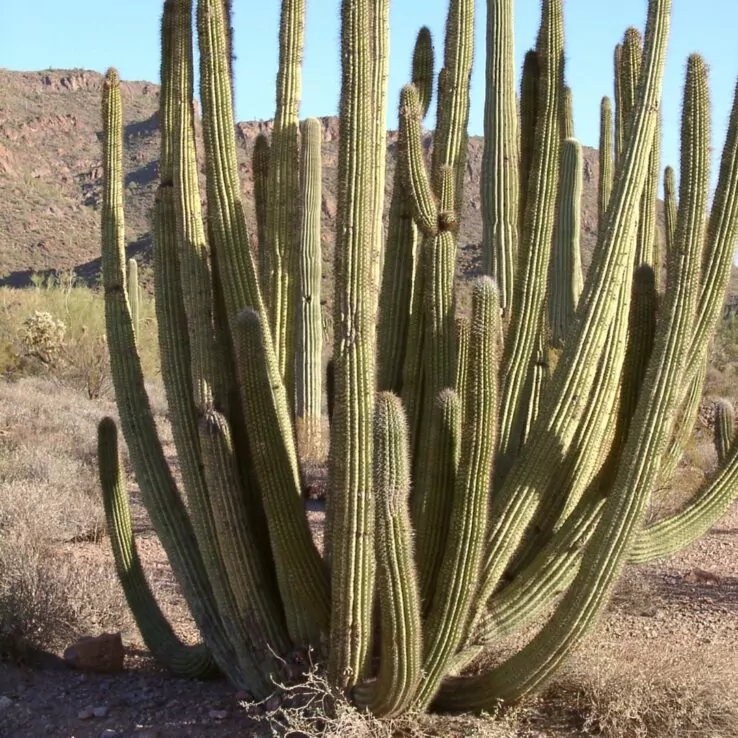
These types of succulents usually grow much larger than indoor ones. They need more direct sun and room to grow.
They make great options for outdoor planters or garden beds. They can be small shrubs up to 4-feet tall and wide or like big trees depending on the variety.
Hardy succulents plant species

Most succulents can not withstand very cold temperatures, but there are a few that can. They usually live in dry areas with freezing winter months.
They can also survive both bright and hot conditions, but they do require some shade during the hotter season.
Only two genera of succulents are known to be able to tolerate freezing temperatures. Those are Sempervivums and Stonecrop Sedums. Sempervivums are commonly called "hens and chicks". Stonecrop sedum species are ever-green. They flower in early summer and turn red during fall, winter, and drought.
Edible succulents
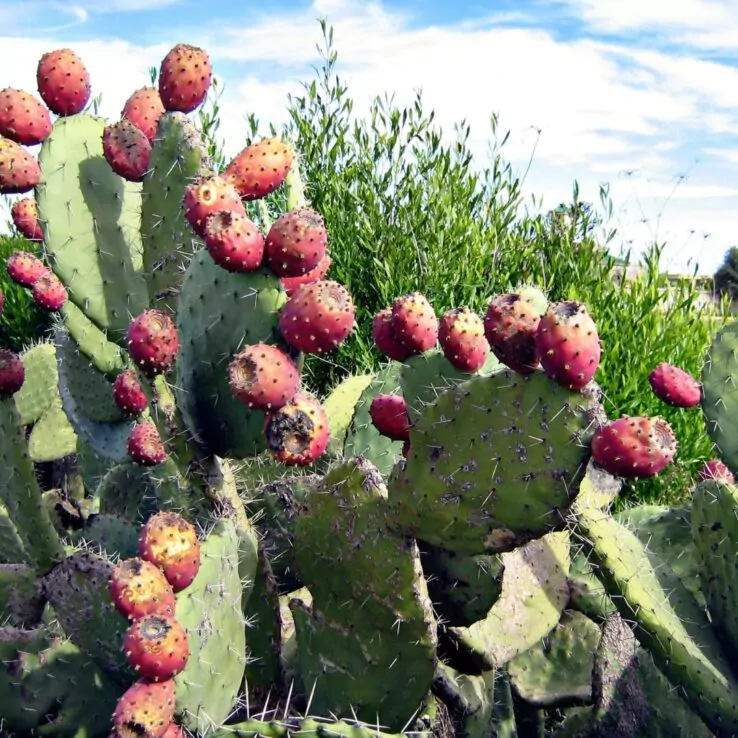
Some succulents are edible and considered healthy food options. They usually carry some health benefits that are not easily found in other leafy greens.
Some of these succulents include
- Aloe Vera plant
- Prickly Pear (Opuntia Ficus-Indica)
- Purslane (Portulaca Oleracea)
- Barrel Cactus (Ferocactus wislizeni)
- Sedum Morganianum
Healing abilities of succulents

Succulents that grow in dry climates/warm temperatures usually store water in their leaves, stems, and root system. This is why they are great for people with dry skin because the moisture they retain has skin-benefiting vitamins.
Succulents have been used for centuries to cure wounds, burns, stomachaches, and other ailments. Aloe vera and yucca are two of the most well-known medicinal plants. The juice and gel from several parts of aloe vera plants have medical uses, as do certain compounds in the leaves.
Common Problems with Growing Succulents
Succulents are very easy to care for, but a few issues could ruin their appearance or kill them. The most common ones are listed below.
- Too much water or too little light or irregular watering will cause the plant to droop and eventually die. Most succulents' fleshy stems and leaves tend to absorb moisture from the air. In case of overwatering, plant repotting is necessary asap.
- Poor drainage is the main cause of root rotting. That's why you should always use a container with a drainage hole, well-draining soil, or add sand to existing soil.
- Poor succulent soil having fewer nutrients makes the plant lose its colors, blooms, or even stop growth.
- Algae may overgrow on succulent leaves if not properly cared for.
- Too much direct sunlight can cause the stems and fleshy leaves to burn and become brown. Let its leaves heal in a shady spot.
- Succulent propagation is fairly simple, but you should know how each succulent plant type grows.
- Occasionally, insects and pests may also cause a problem (especially for green ones). The most common ones are mealybugs, aphids, and snails. Most of them can be removed with a soapy water solution.
Conclusion
Succulents are a wonderful, low-maintenance plant for someone who is always on the go. With little water and light needed to thrive, they're perfect for someone with minimal space or time.
Succulent plants come in so many sizes and colors that you can find one no matter what personal space you want to decorate! Also, these plants have been used as medicine since ancient times because of their ability to store water.
Just remember succulents don't tolerate very cold weather at all--only two genera are known to be able to withstand freezing temperatures!
Don't forget to leave a comment below, letting me know what you think! Also, feel free to share any other tips or facts you have about the succulent plants in the comments. Thanks for reading!

